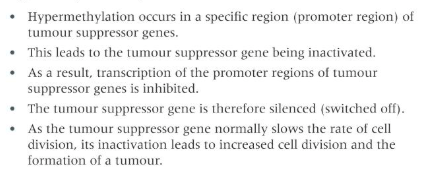20.5 Gene expression and cancer
1/9
There's no tags or description
Looks like no tags are added yet.
Name | Mastery | Learn | Test | Matching | Spaced |
|---|
No study sessions yet.
10 Terms
Types of tumour:
Not all tumours are cancerous.
Malignant tumours (cancerous) and benign tumours (non-cancerous)
Comparison between malignant and benign tumours:
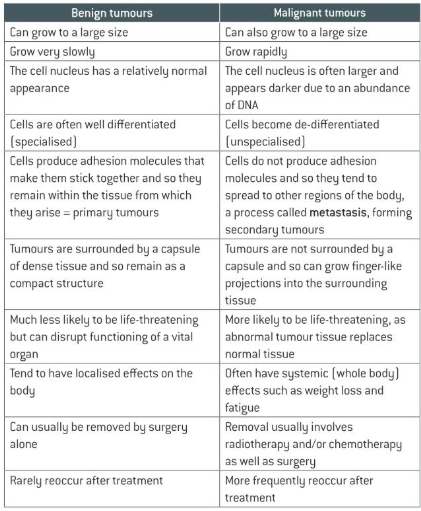
Cancer and the genetic control of cell division:
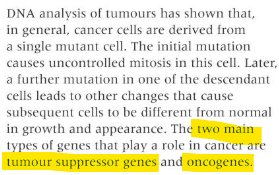
Oncogenes
Most oncogenes are mutations of proto-oncogenes.
What do proto-oncogenes do?
Stimulate a cell to divide when growth factors attach to a protein receptor on its cell-surface membrane. This activates genes that cause DNA to replicate and the cell to divide.
If a proto-oncogene mutates into an oncogene it can become activates for two reasons:
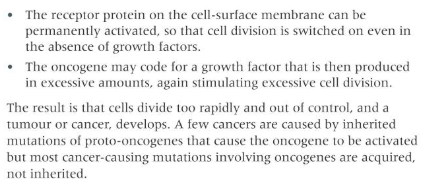
Tumour suppressor genes:
Tumour suppressor genes slow down cell division, repair mistakes in DNA, and ‘tell’ cells when to die - a process called apoptosis
They have the opposite roles of proto-oncogenes
Normal tumour suppressor gene maintains normal rates of cell division and so prevents the formation of tumours.
If a tumour is suppressed it becomes mutated it is inactivated
Stops inhibiting cell division and cells can grow out of control.
These mutated cells that are formed are usually structurally and functionally different from normal cells.
While most of these die, those that survive can make clones of themselves and form tumours
Types of tumour suppressor genes:
TP53, BRCAI, BRCA2
Inherited cancer genes
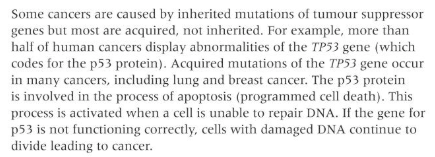
The process by which hypermethylation may lead to cancer is as follows:
